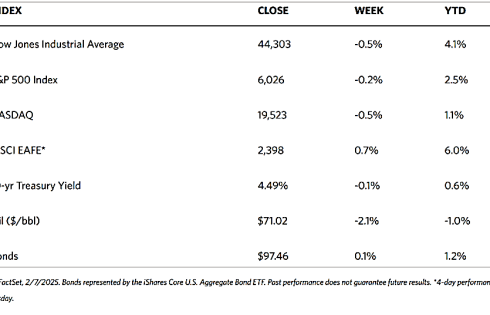Weekly Market Review – September 20, 2025
Stock Markets
Equity markets continued their positive momentum this week, with major indices posting solid gains following the Federal Reserve’s first rate cut of 2025. The main stock market index of United States, the US500, rose to 6664 points on September 19, 2025, gaining 0.49% from the previous session. Over the past month, the index has climbed 4.20% and is up 16.87% compared to the same time last year. The three major indexes were coming off a winning session Monday that sent the S&P 500 and Nasdaq to records, with the tech-heavy Nasdaq gained 0.2% and had hit a new high of 22,090.25.
Small-cap stocks emerged as a standout performer, with the Russell 2000 Index of small caps (RUT—candlesticks) closed at an all-time record high above 2,460 yesterday, the first time in nearly four years it’s made an all-time closing high. This surge in small-caps reflects growing investor confidence in domestic-focused companies that stand to benefit from potential policy changes and lower interest rates.
The Morningstar US Market Index gained 1.48%. The best-performing sectors were technology, up 2.76%, and utilities, up 2.22%. The worst-performing sectors were consumer defensive, down 0.4%, and industrials, up 0.04%. The technology sector’s outperformance continues to drive market gains, while defensive sectors lagged as investors rotated into growth-oriented assets.
Value stocks have shown particular strength recently, with the value category remains at a 3% discount to fair value, whereas growth stocks remain at an 8% premium and core stocks are close to fair value. Small-cap stocks remain the most attractive part of the market at a 15% discount, whereas large and mid-cap are fairly valued.
U.S. Economy
The Federal Reserve delivered its anticipated first rate cut of 2025 this week, marking a significant shift in monetary policy. Rate cuts are back, with the Fed delivering its first 25 basis point (0.25%) move in 2025 as it responds to signs of a concerning slowdown in the U.S. labor market. In September 2025, it implemented its first 2025 rate cut, projecting two additional rate cuts this year.
Labor market conditions remain a key focus for policymakers, with unemployment Rate in the United States increased to 4.30 percent in August from 4.20 percent in July of 2025. This uptick in unemployment has contributed to the Fed’s more accommodative stance as they seek to support economic growth while managing inflation expectations.
The central bank’s decision reflects meeting participants submitted their projections of the most likely outcomes for real gross domestic product (GDP) growth, the unemployment rate, and inflation for each year from 2025 to 2028, indicating a data-dependent approach to future policy decisions.
Metals and Mining
The precious metals market has experienced significant momentum, particularly in gold, which continues to reach new heights. Gold rose to 3,682.50 USD/t.oz on September 19, 2025, up 1.06% from the previous day. Over the past month, Gold’s price has risen 10.09%, and is up 40.47% compared to the same time last year.
This remarkable performance in gold reflects multiple factors including geopolitical tensions, central bank monetary policy shifts, and continued safe-haven demand. Gold prices—a barometer of safe-haven demand—reached an all-time nominal high in mid-October, fueled by heightened geopolitical tensions, sustained central bank purchases.
Base metals face a more challenging outlook as following a projected 4 percent increase in 2024, base metal prices are anticipated to stabilize in 2025 and decline by 3 percent in 2026 as industrial activity grows at a moderate pace in major economies, including China.
Energy and Oil
Energy markets showed mixed performance this week, with crude oil facing downward pressure. Crude Oil fell to 62.72 USD/Bbl on September 19, 2025, down 1.34% from the previous day. Over the past month, Crude Oil’s price has risen 0.02%, but it is still 11.66% lower than a year ago.
The energy sector has been impacted by broader economic concerns and supply-demand dynamics. The energy price index fell by 3.9% in August, driven by an 8.8% drop in U.S. natural gas and a 3.6% decline in crude oil prices.
Despite short-term volatility, energy markets continue to be influenced by geopolitical factors and global economic growth prospects, with geopolitical tensions remain a significant upside risk in commodity markets. The possibility of escalating conflicts in the Middle East represents a substantial near-term risk to several commodities.
Natural Gas
Natural gas markets have shown volatility amid changing supply and demand dynamics. The sector faces headwinds from increased production capacity and moderate demand growth, though geopolitical factors continue to provide support for prices.
Weather patterns and seasonal demand shifts remain key drivers for natural gas pricing, with storage levels and production capacity utilization closely monitored by market participants.
World Markets
International equity markets have shown resilience, with several regions posting gains alongside U.S. markets. Chinese markets have been particularly noteworthy, with the MSCI China Index’s near-30% YTD gain overshadowing flat performance in India. India hasn’t underperformed the broader MSCI EM Index by this degree in decades.
European markets have generally trended higher as investors anticipate continued monetary accommodation from the European Central Bank. The coordinated global shift toward easier monetary policy has provided support for risk assets across developed markets.
Emerging markets have experienced mixed performance, with commodity-producing nations benefiting from selective strength in precious metals while those dependent on industrial commodities face headwinds.
The Week Ahead
Key economic releases and events to monitor in the coming week include:
Key Topics to Watch:
• Federal Reserve officials’ commentary on monetary policy outlook
• Weekly jobless claims data
• Consumer confidence indicators
• Manufacturing and services PMI flash readings
• Corporate earnings reports from key technology companies
• Geopolitical developments affecting commodity markets
• Central bank communications from major economies
Market participants will be particularly focused on any guidance regarding the pace of future rate cuts and economic data that could influence the Federal Reserve’s policy trajectory. The interaction between monetary policy, inflation expectations, and labor market conditions will remain critical factors driving market sentiment.
Investment Implications:
The current market environment suggests continued opportunities in value-oriented investments, particularly in small-cap stocks trading at attractive discounts. The precious metals rally, led by gold’s exceptional performance, indicates ongoing demand for inflation hedges and safe-haven assets. Energy markets face near-term challenges but may offer opportunities for longer-term investors willing to navigate volatility.
As we progress through the final quarter of 2025, investors should remain attentive to the evolving economic landscape, particularly the effectiveness of monetary policy accommodation in supporting growth while managing inflation expectations.












